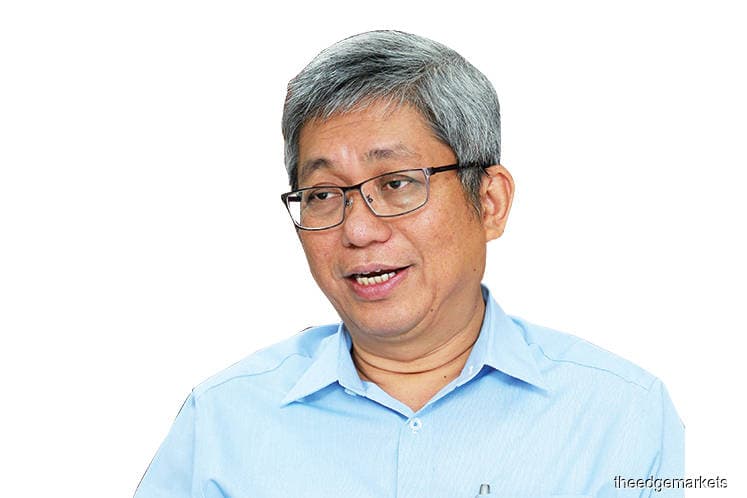
This article first appeared in The Edge Financial Daily on August 20, 2018
KUALA LUMPUR: New Hoong Fatt Holdings Bhd (NHF), unfazed by local debate over a third national car, is not overly concerned about talks of policy changes in the local automotive market as it expands its opportunities in Asean.
This is in line with the auto replacement parts maker’s strategy to increase the contribution from overseas market to above 60% of the group’s revenue by 2021 from 53% currently.
Its managing director Chin Jit Sin said the group will ramp up its business development efforts overseas to increase sales to both new and existing customers.
NHF already has a presence in Asean, but it made a small contribution of 17.2% to the group’s revenue for the financial year ended Dec 31, 2017 (FY17), while the domestic and non-Asean markets accounted for 47.1% and 35.7% respectively.
The 57-year-old Chin expected the Asean contribution to grow in the coming years, but declined to give a forecast.
“Business goes where the business takes us. There is a bigger agenda for us out there and we need to pay attention to it. Until 2020, the focus is on growing our presence in Asean,” he told The Edge Financial Daily in a recent interview.
“We have been focusing on Thailand and Indonesia and going forward, we’ll focus on selling auto replacement body parts in the Philippines, Vietnam and later, Myanmar,” he said, adding that Malaysia will remain an important market for the group.
For players like NHF who serve the auto aftermarket, its role in the auto ecosystem very much depends on the total industry volume (TIV), or simply put, the number of vehicles on the road.
Last year, Malaysia’s TIV fell 0.6% to 576,635 units from 580,085 units in 2016. But between January and July 2018, total vehicle sales rebounded to climb 7.6% to 358,179 units from 333,006 units a year ago.
The Malaysian Automotive Association is expecting sales volume for August to be maintained at the July level.
“When Proton made its debut in 1985, we (NHF) found a need to be here. The Malaysian economy was also then growing at [about] 10% each year. In the past few years, we’re talking about a single-digit gross domestic product growth.
“With our current size of economy and population, we see the [auto] market growing at a slower rate,” he said.
Chin cited Australia, which decided to mark an end to its auto manufacturing industry following the factory closures of General Motors Co, Toyota Motor Corp and Ford Motor Co in 2017 and earlier.
It was reported that the small size of the Australian car industry made it almost impossible to compete against foreign automakers.
“A country can only do so much. If the Malaysian government wants a third national car, I’d think why do we limit ourselves to only Malaysia? Why don’t we look at the whole of Asean?” Chin said.
Chin subscribed to the view of collaborating with neighbouring countries such as Indonesia, which surpassed Thailand to record the highest TIV in Asean since 2014, to jointly produce vehicles to be sold in a larger market, which he believed makes more sense.
Statistics by the Asean Automotive Federation showed that Indonesia recorded 1.08 million units of TIV in 2017, followed by Thailand (871,650 units), Malaysia and the Philippines (425,673 units). The Philippines has shown consistent growth since 2013.
Meanwhile, Chin expected to see both the group’s net profit and revenue for the second half of 2018 to be in line with, if not better than, the first half, as raw material prices are now seen stabilising.
In the cumulative six months ended June 30, 2018 (1HFY18), the group’s net profit fell 52.5% to RM4.7 million, from RM9.9 million a year ago, hit by unfavourable foreign exchange impact, and higher raw material and other manufacturing costs. Revenue grew by a marginal 1.2% to RM125.59 million, from RM124.13 million in 1HFY17.
According to Chin, the group imports steel from major producing countries such as China, Taiwan and South Korea, while resin is sourced locally. Steel prices in China have soared due to the output despite ongoing production curbs, and resin prices, on the other hand, too are high in tandem with the recovery in crude oil prices this year.
“Now that the prices [of steel and resin] have somewhat stabilised, we think we will be able to manage the costs better, and focus solely on producing, to meet our customers’ demand. Meeting all our customers’ demand would mean we will do just as well, if not better than 1HFY18,” he said.
In the past four years, NHF has seen its sales on a steady growth path, from RM200.6 million in FY14 to RM250.61 million in FY17.
Net profit, however, saw fluctuations during the same period, ranging between RM11.97 million and RM29.99 million.
“We will continue to see a revenue uptrend towards 2020, as we focus on the bigger market,” said Chin.
NHF’s share price closed eight sen or 2.63% higher at RM3.12 last Friday, valuing the group at RM257.94 million.